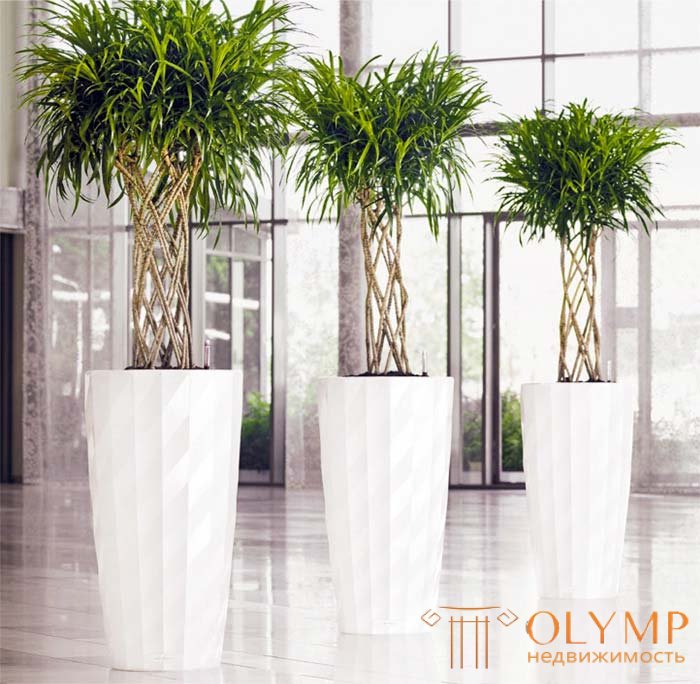

These include, above all, group planting in the total capacity. They are very diverse in size - from a desktop miniature of two or three plants to a large volume-spatial composition. In such a group, it is possible to combine plants of the same height (for example, aglaonem, calathea, spathiphyllum), or species that form several tiers. The main commandment when creating a composition is the same "social" requests of the group members, in other words, the same requirements for soil, watering, light and heat. If you trust the interior design to professional phytodesigners, before offering you a few solutions to choose from, they go to the object and carefully study all its “biological” features.
From the color point of view, the pot group can be monochrome (combining shades of the same color) or contrasting. Vivid color spots on the background of monophonic leaves stand out for variegated plants: royal begonia, dieffenbachia, coleus, arrowroot. Contrasting in appearance, combinations are, for example, spreading begonia bushes of the Horntails, with large pubescent leaves on long, thick petioles and sharp, vertically standing, xiphoidal leaves of Sansevieria. Another option is the dark lace of an iglyzi in combination with wide soft leaves of euharis. The group can be organized symmetrically, thus emphasizing the decorativeness of the whole composition, or trust the natural beauty of asymmetry. Here are some possible options for biologically combining plants: asnlen fern, scandusus and aglaonema; Cereus, Euphorbia, Echinopsis, Echeveria and Fatty; dracaena, peperomiya, saintpaulia and ivy. Such a composition can be placed in a regular pot, flower, container or even in a hanging basket. Having chosen this particular option for yourself, do not forget: there is a danger of a large number of plants being infected by a disease or pest. In addition, as they grow, you will have to be very careful to ensure that the balance of the composition is not disturbed.
The second variant of the pot group is a combination of several plants, each of which is planted in a separate pot. Such a composition is more mobile - you can easily remove a diseased specimen or add a beautiful blooming. In addition, there is no need to select species with the same requests - each of them can determine their own irrigation conditions and fill in the necessary soil. The pots are placed either in the same container (in this case it is convenient to disguise them with gravel, moss or peat), or very close to each other. Today, pots resembling a children's designer came into fashion: they dock with each other in a wide variety of combinations. From time to time it is recommended to rotate the container, because in the center of the group the lighting is weaker than at the edges, and the plants will develop unevenly.
Что бы оставить комментарий войдите
Комментарии (0)